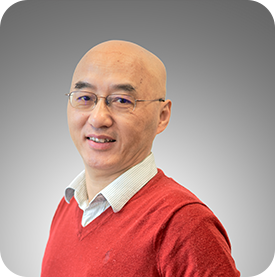

최근 Cyagen은 임상전 연구를 위한 게놈 인간화 마우스 모델을 구축하는 웹 세미나를 열었습니다. 이번 웹 세미나는 Dr. Marvin Ouyang(Cyagen 부총재 겸 최고과학책임자)가 우리 세미나 청중들에게 연설하고 있습니다. 주제는 '유전체 인간화 마우스 모델: 생물의학 연구에 있어서의 생성 및 응용' 입니다.우리는 아주 짧게 내용을 요약하고, Dr. Ouyang가 웹세미나 기간 동안 제출한 모든 질문에 대한 개인적인 답변을 제공했습니다. 이번 세미나 녹화 영상을 보려면 이곳을 클릭하여 신청하시기 바랍니다.
웹 세미나에서 설명했듯이, 게놈 인간화 모델은 대부분의 상업화된 유전자 인간화 마우스 모델과 달리 인간 코딩 서열만을 마우스 게놈에 통합합니다. 그러나 최근 유전체 분석 연구에서는 비코딩 유전체(전사 및 비전사)의 중요성을 밝혀냈고, 인간화 마우스 모델에서 비코딩 영역 서열의 필요성을 역설했습니다. Cyagen의 TurboKnockout-Pro 기법의 주요 장점 중 하나는 우리가 더 긴 인간의 DNA 조각(비코딩 영역 서열을 포함)을 생쥐 게놈에 도입할 수 있다는 점입니다. 따라서 '게놈' 이라는 용어는 이 조각들을 일반적인 유전자 인간화 생쥐 모델과 구분합니다.
Dr.Ouyang의 현장 답변은 다음과 같다
Q1. Can you tell me the insertion size and efficiency of the TurboKnockout-Pro?
Marvin Ouyang (MO):
When carefully designed (the use of appropriate lox sequences, and combination of selection markers), the efficiency of TurboKnockout-Pro is very high (~30%) for the insertion of up to 300 kb. We have successfully inserted~1 Mb DNA sequence into mousegenome by sequential gene targeting with TurboKnockout-Pro platform.
Q2. Hi everyone, I have a question, if I say I have a drug that targets protein A, and then I express this protein on humanized mice and then give the drug to the mice, does it work the same as in humans and is it informative?
MO:
Yes, the compound interaction with its target expressed in humanized mice mimic theirinteraction in humans, as long as the target is humanized.
Q3. If a mouse gene is replaced with a human gene, is it correct to assume that the expression level of the human gene is also equivalent to that of the mouse gene? (for example in a humanized mouse model, a protein that is low-expressed in mice will not be increased?)
MO:
Gene expression level is mainly determined by the strength of its promoter and enhancer, but untranslated regions and other non-coding regions, including intronic sequences may also play important roles in gene expression by regulating RNA splicing and/or mRNA stability. So as long as the gene structure is maintained, the humanized mice should express the human gene at a level comparable to mouse gene expression. However, if human cDNA is used to replace mouse genomic DNA sequence, the human gene may be expressed at a different level, as the intronic sequence and UTRs are not intact.
Q4. In terms of off-target mutagenesis is there any difference between the traditional ES cell targeting and your improved technique? How many rounds of BC to Wt would you recommend on your 1st Het product? Any cons of your technique compared with the traditional approach?
MO:
Cyagen’s proprietary TurboKnockout® platform is the choice for complex genetic modifications of the mouse genome. It combines the advantages of precise gene modification, clear IP of traditional ES cell gene targeting approach and the short turnaround time of newer CRISPR/Cas9-mediated genome editing. Like the traditional ES cell gene targeting approach, the random integration event (off-target) is excluded by the reliable Southern blot analysis. With TurboKnockout technology, F1 hets (Neo cassette-free ) will be generated from breeding of F0 founder mice with wt mice. By intercrossing F1 hets, 25% of the offspring are expected to be homozygotes, which greatly shortened the time required for animal production.
Q5. What are the advantages of using a genomic humanized mouse model to differentiate it from existing methods?
MO:
Fully genomically humanized mouse models have several advantages: 1). They can better mimic physiological expression of the target, as very often the intronic sequences and untranslated sequences are involved in the regulation of gene expression; 2). They are irreplaceable tools for evaluating gene therapies when the targets are noncoding sequences.

Marvin Yingbin Ouyang, MD, PhD
Executive Vice President and Chief Scientific Officer, Cyagen
Before joining Cyagen in 2012, Dr. Ouyang served as a senior scientist at Oklahoma Medical Research Foundation, Thios Pharmaceuticals in the United States, and as Group Leader of the Molecular Biology Department of Taconic Biosciences. Over the past 20 years, he has committed himself to the custom design and generation of genetically engineered mice. While at Cyagen, he has successfully developed thousands of transgenic and gene knockout/knockin mouse and rat models for the biomedical research and drug discovery communities worldwide. He has published many papers in high-level academic journals such as PNAS and JBC; his technical services have been directly cited by Nature and other international journals hundreds of times.
웹세미나에 대해서 - 녹화 영상 시청하기
약물 개발 파이프라인의 성공은 효과적인 약물 발견과 임상 전환을 촉진하는 기초와 임상 전 연구 실천에 달려 있습니다. 새로운 분자 게놈 변화 기술의 출현으로 유전자 돌연변이가 이전 방법보다 더 빠르고 저렴하게 쥐의 생식계를 도입할 수 있게 되었습니다. 또 바이러스 벡터를 이용한 체세포 유전자 변형 개발과 사용, siRNA와 (Antisense oligonucleotides, ASO)를 이용한 유전자 발현 조작의 빠른 진전은 유전체학 및 시스템생물학에 대한 보다 깊은 탐색을 허용합니다.
이들 기술은 진보한 반면 유전체 분석(genome sequencing) 비용을 절감해 환자 집단에서 병원성 원인을 식별하는 돌연변이를 초래해 생쥐를 이용한 인간 질병 시뮬레이션에 전례 없는 기회를 제공했습니다. 게놈 프로젝트의 현대적 진전으로 사람들은 수많은 번역 관련 유전적 배경에서 보다 빠르고 경제적으로 정확한 게놈 인간화 마우스 모델을 만들 수 있게 됐습니다.
이번 웹 세미나에서 당신은 다음과 같이 알게 될 것입니다
What are TurboKnockout® and TurboKnockout® Pro
● Technology Principles
● TurboKnockout® and TurboKnockout® Pro VS CRISPR/Cas9
● Case Study
Genomically Humanized Mouse Models in GCT Drug Development
● Advantages of Using Genomically Humanized Mouse Models
● Next Generation Rare Disease Humanized Mouse Development Program
● Case Study
이번 세미나 녹화 영상을 보려면 이곳을 클릭하여 신청하시기 바랍니다.
If you need to read articles in English, please visit our US websites.




영업일 기준 1-2일 내에 답변해 드리겠습니다.